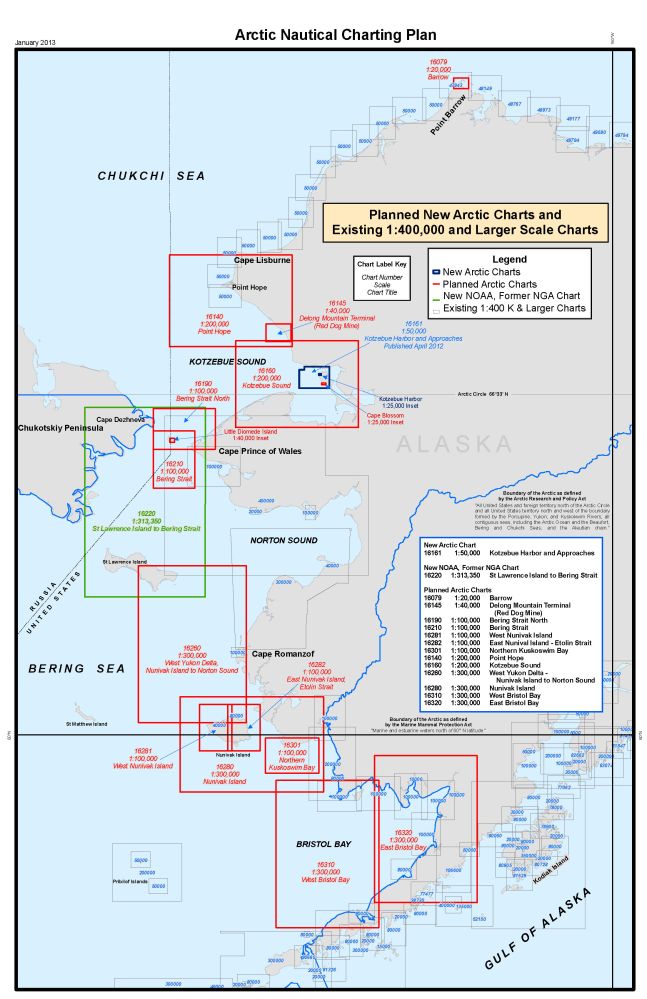In June 2011, Coast Survey issued the first edition of the Arctic Nautical Charting Plan, a major effort to improve Arctic chart coverage that is inadequate for modern needs. After consultations with maritime interests and the public, as well as with other federal, state, and local agencies, we have issued the updated Arctic Nautical Charting Plan: A plan to support sustainable marine transportation in the Alaska and the Arctic.
“Maritime challenges are increasing in the Arctic. As multi-year sea ice continues to disappear at a rapid rate, vessel traffic in the Arctic is on the rise,” said Rear Admiral Gerd Glang, Coast Survey’s director. “This is leading to new maritime concerns, especially in areas increasingly transited by the offshore oil and gas industry and cruise liners.”
“Given the lack of emergency response infrastructure in remote Arctic waters, nautical charts are even more important to protect lives and fragile coastal areas,” Glang points out.
Commercial vessels depend on NOAA to provide charts and publications with the latest depth information, but many regions of Alaska’s coastal areas have never had full bottom bathymetric surveys — and some haven’t had more than superficial depth measurements since Captain Cook explored the northern regions in the late 1700s.
“Ships need updated charts with precise and accurate measurements,” explained Capt. Doug Baird, chief of Coast Survey’s Marine Chart Division. “We do not have decades to get it done; ice diminishment is here, now.”
We appreciate the perspectives offered by Alaska’s mariners in response to the 2011 Arctic Charting Plan. For instance, feedback called for adding a large-scale inset to the layout for the “Kotzebue Harbor and Approaches” chart, which we published as the first plan-inspired new chart, in April 2012.
The 2013 plan specifies 14 additional new charts, to complement existing chart coverage. Seven of the charts will fill gaps in medium-scale chart coverage from the Alaska Peninsula to Cape Lisburne at the edge of the North Slope, for coastal transits along the west coast of Alaska. Larger scale charts will provide for safer passage though the Etolin and Bering Straits, or for entry into harbors such as Barrow, the northernmost town in the United States.

The revised plan also adds NOAA chart numbers for all of the 14 future charts, and provides updated information and graphics describing the infrastructure and data needed to compile the charts.
The charting plan continues as a “living document,” as new concerns and challenges emerge. Anyone can submit comments through the Coast Survey Inquiry and Discrepancy System.

Reblogged this on Ronald Grey and commented:
We have not yet begun to succeed – join me: http://RonaldGrey.com/JoinMe